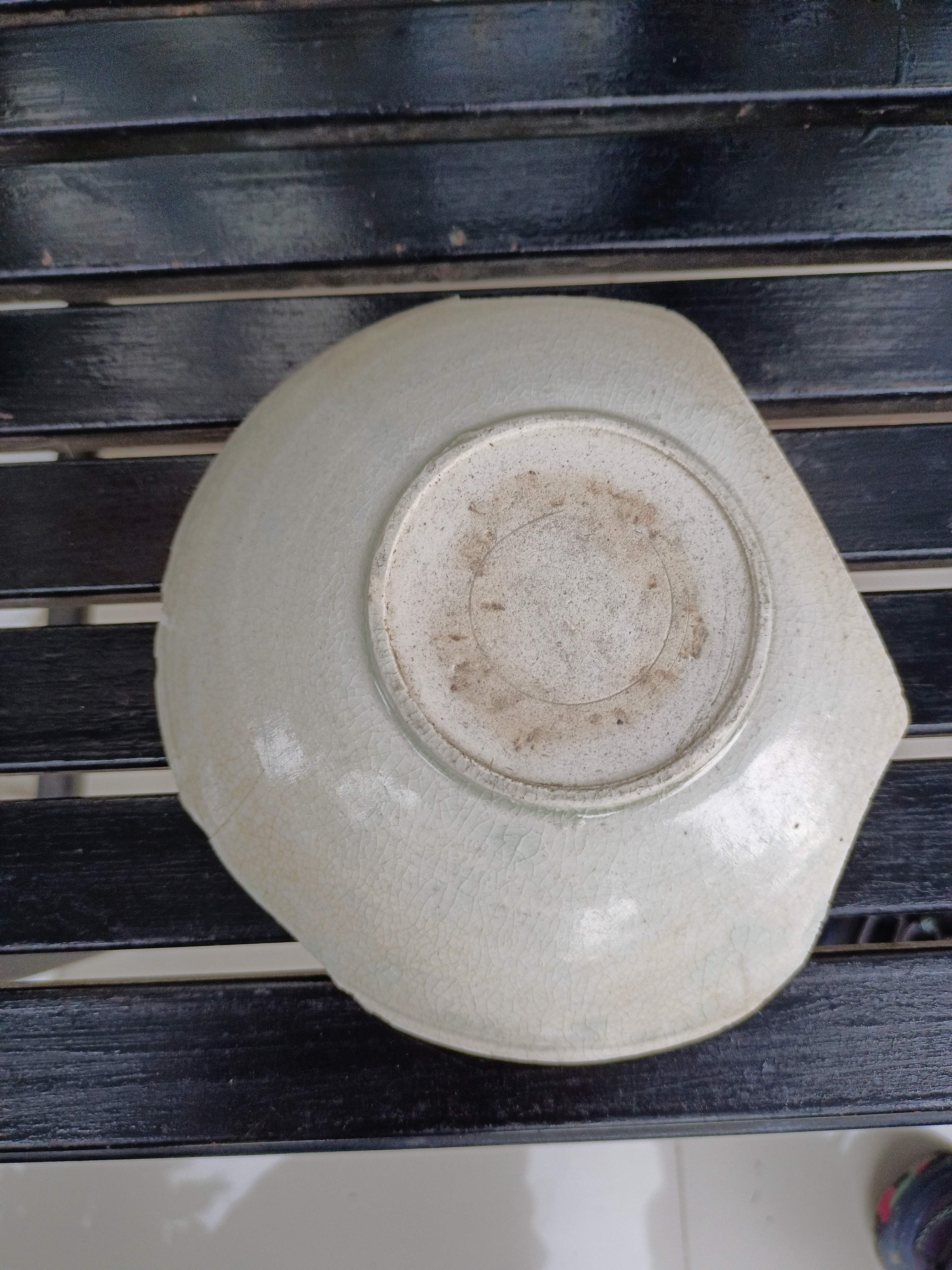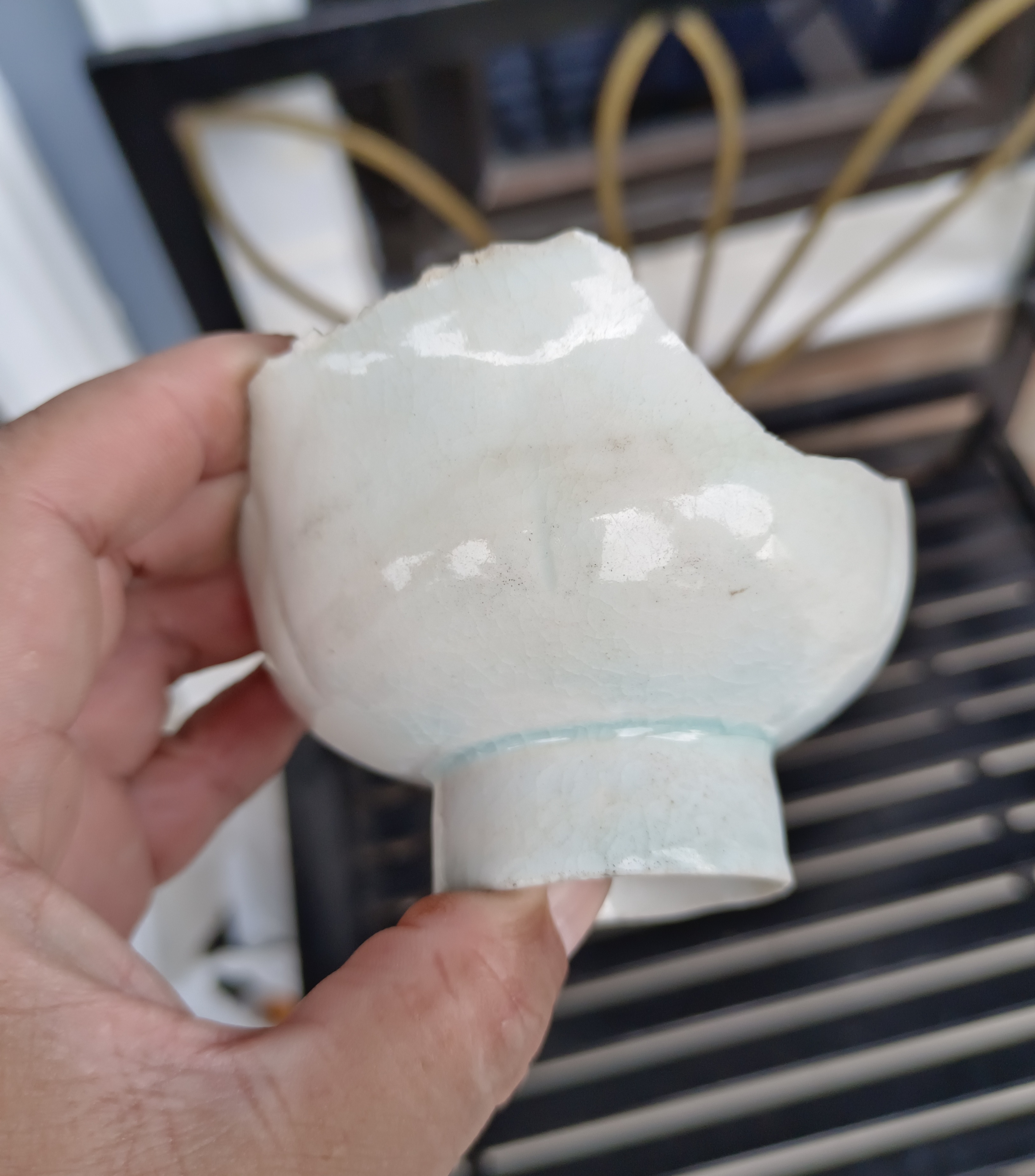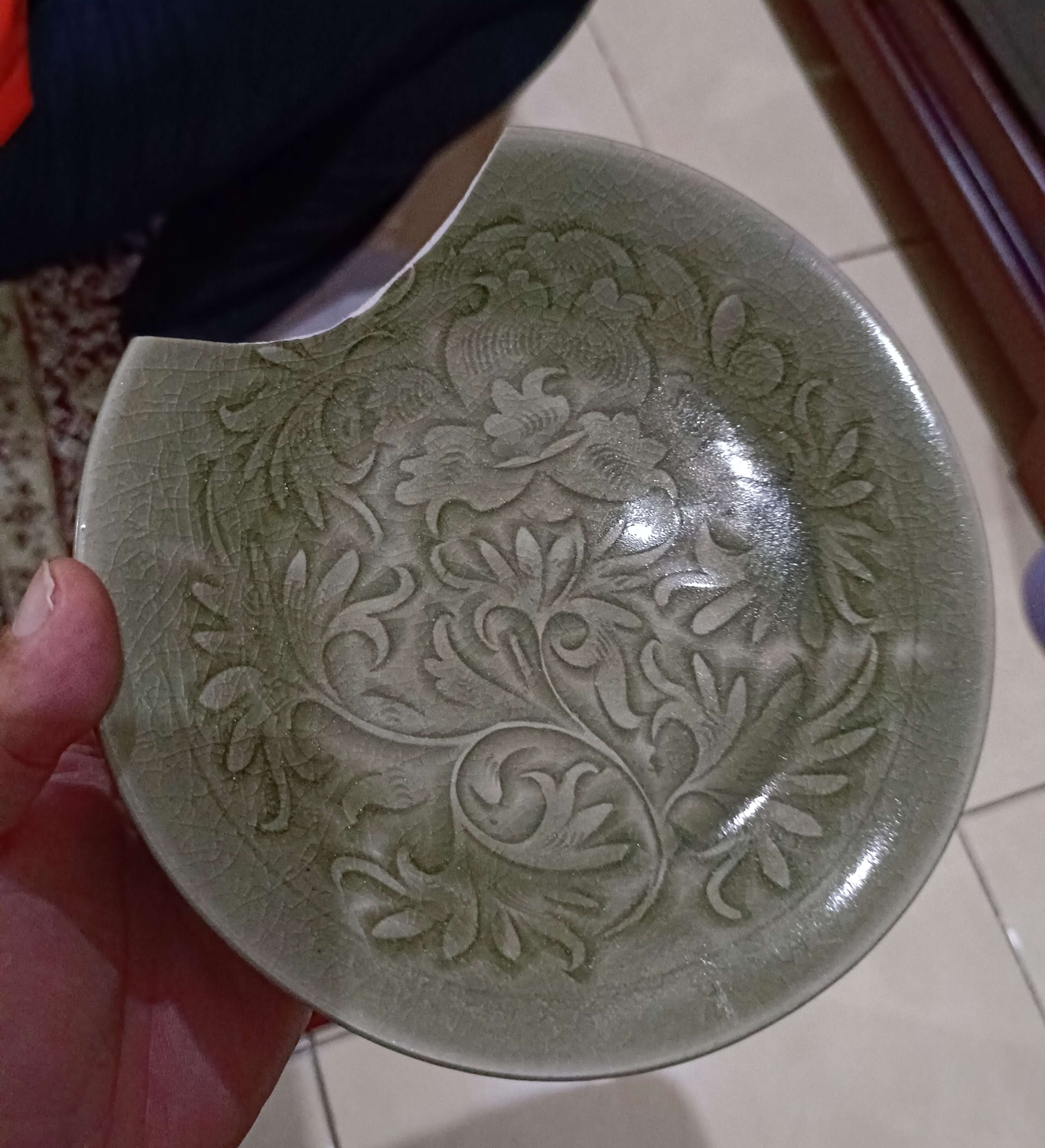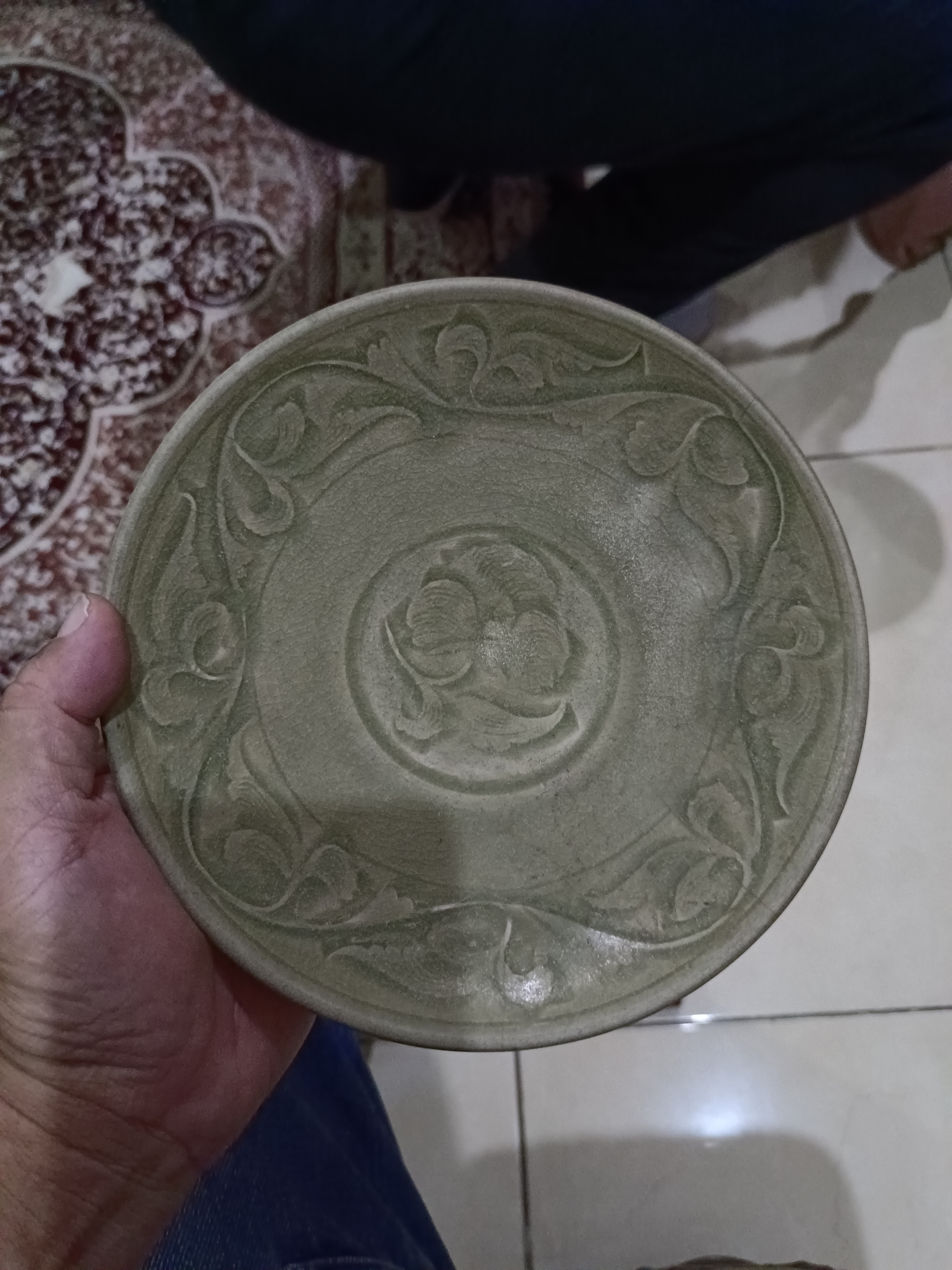


















Southern Song Jiangxi Jingdezhen and other kilns Found in Jambi Batang Kumpeh
Jiangxi Jingdezhen Qingbai wares
Jingdezhen qingbai wares were first produced during the Northern Song period. A Northern Song official Peng Ruli.(彭汝砺)in his poem "(送许屯田)Sending off Xu on his Garrison mission" in Northern Song 2nd year of Zhiping (治平) (A.D. 1065) mentioned that Fuliang (where Jingdezhen was situated) made porcelain with colour like jade (浮梁巧烧瓷,颜色比琼玖). Jiang Qi's (蒋祈) work Tao Ji (陶记)of Southern Song period also commented that the consumers praised the Jingdezhen wares as Rao Yu, that is jade from Raozhou. As it has a light bluish colour tone, the term Qingbai (ie bluish white) was used to describe such wares. The term could be found in Song texts. The term yingqing (shadow blue) was coined during the Qing dynasty to describe this same category of wares.
Qingbai as compared with Tang/Song white wares has the following distinct differences: the glaze is more fluid with bluish tone where the glaze accumulated and a more whitish tone if it is thin. The glaze is more transparent with a greater degree of lustre.
The colourant of the qingbai glaze is the iron oxide in the raw materials used to make the glaze. The glaze composition is also high in calcium oxide which enable a bluish tinge to develop when fired under reduction atmosphere. The glaze has a light yellowish tone if not properly reduced during reduction firing.
Since the late Northern Song period, Jingdezhen Qingbai wares were export overseas. However, compared with Guangdong, Fujian and Longquan wares, the quantity exported was comparatively small. Jingdezhen qingbai wares were high end products which were even highly treasured in the domestic market. Hence, one can understand why relatively small amount were exported as they commanded high prices. This can be substantiated from the ceramics cargo mix of shipwrecks such as Late Northern Song Pulau Buaya and Flying Fish; and Southern Song wrecks such as Huaguang Jiao, Jepara, Java Sea, Breaker Shoal and Nanhai 1.
So far, from Batang Kumpeh the number found was also rather limited and most of what I could see from the Indonesian dealers Facebook posts were damaged pieces.
 |
 |
 |
 |
 |
|
 |
|
 |
|
 |
|
 |
 |
 |
 |
 |
|
 |
|
 |
|
 |
|
 |
|
 |
|
 |
|
| Some examples of Jingdezhen Qingbai wares Found in Batang Kumpeh | |
Other Jiangxi Kilns
So far, there were some rather rare finds which orginated from Jiangxi Jizhou and Ganzhou kilns. The green lead glaze dish with impressed floral decoration was a surprise to me.
 |
 |
| Jizhou green lead glaze dish with impressed floral decoration. This may be erroneously identified as Fujian Cizao if I have not seen similar examples in the Jizhou Museum. | |
| Brown glaze pots that could be from Jiangxi Ganzhou kiln | |
Relatively, the export of Jizhou and Ganzhou Qingbai wares is among the least understood. Very little archaeological references have been published and hence identification can be rather challenging. However, the two examples illustrated below are likely candidates based on their physical features.
 |
 |
| An example of a Jizhou Qingbai found in Jambi | |
 |
 |
| A similar example exhibited in Jizhou Museum | |
 |
 |
| Posssibly a Jiangxi Ganzhou qingbai bowl found in Jambi. It has the typical thick and generaly uneven milky glaze. | |
 |
|
| A example excavated from Ganzhou kiln | |
 |
|
| Song Foliated form dish likely from Ganzhou kiln | |
 |
|
| Another example from the Janzhou kiln | |
Yaozhou Green ware
There is very little information related to Yaozhou wares that were exported to
Southeast Asia region. The Sabah Flying Fish wreck did carry some Yaozhou
bowls with carved floral decoration. I have seen some fragments with
carved floral decoration from the Sumatra Kota Cina site exhibited in National
University of Singapore Museum. In the past, I have also seen some
examples sold by a Jakarta dealer and saw some big Yaozhou bowls in the Vietnam
Ho Chiminh antique market.
So far, from Batang Kumpeh I have only come across only the below examples:
 |
 |
 |
 |
 |
 |
 |
 |
 |
| Beautiful floral shaped Yaozhou dish with impressed floral decoration |
Written by: NK Koh (4 Apr 2023)